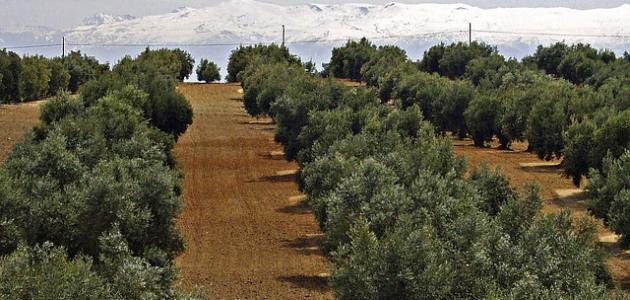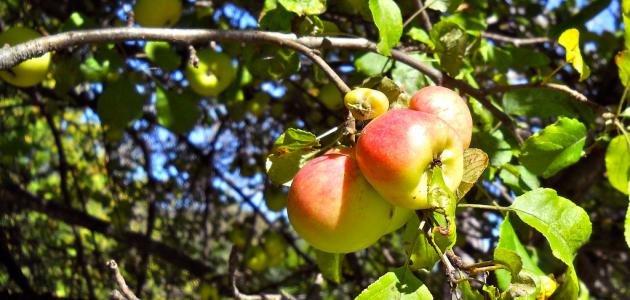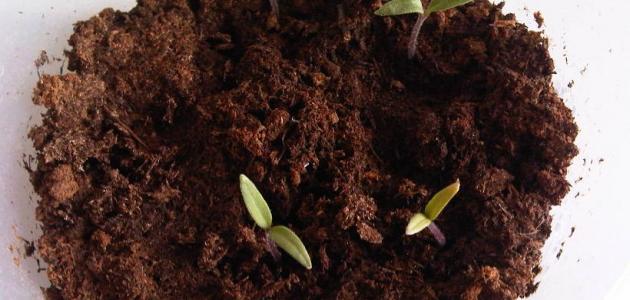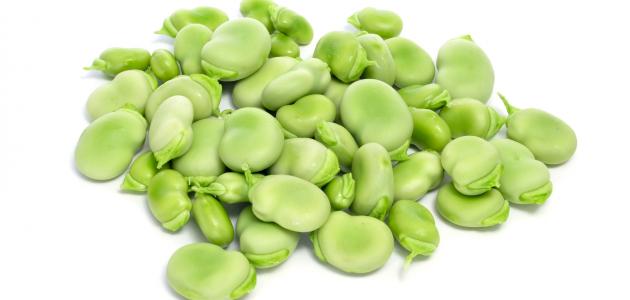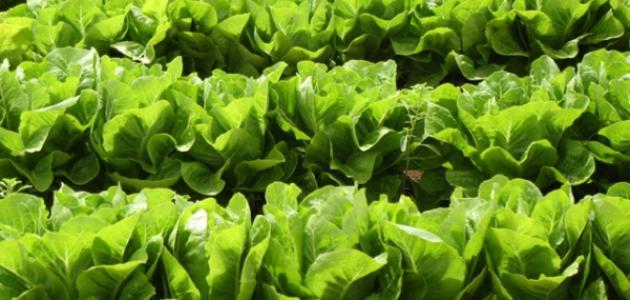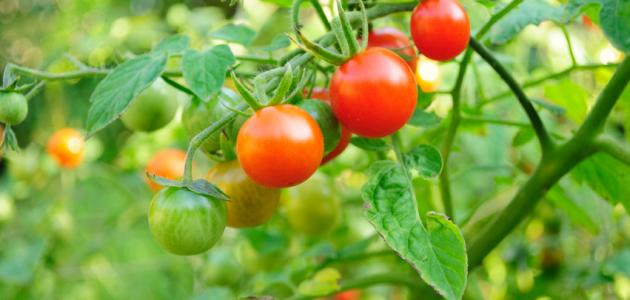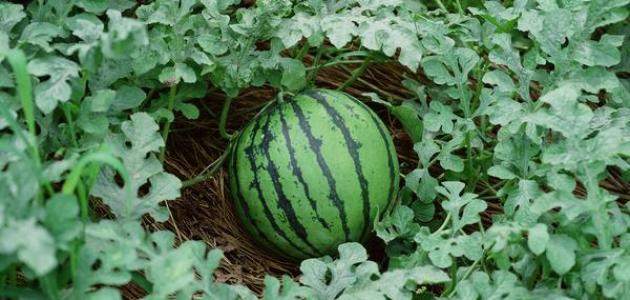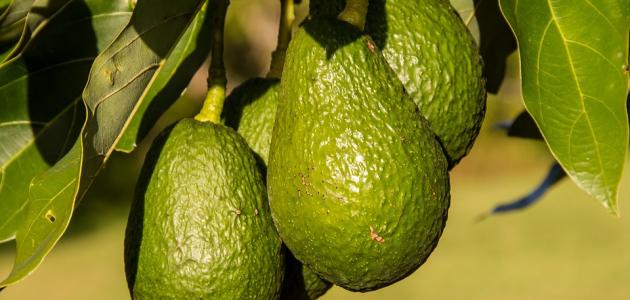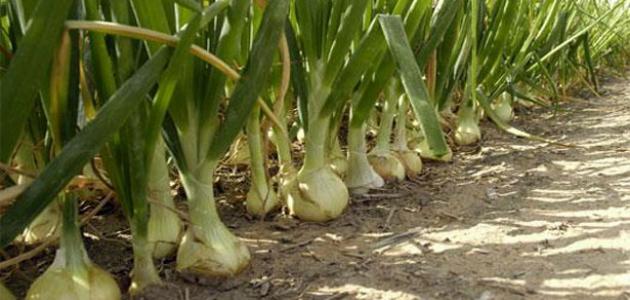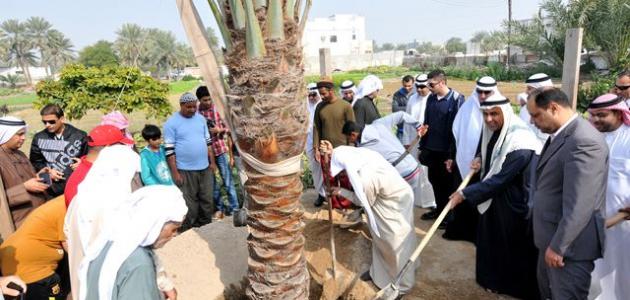How to plant olive trees
Olive trees are cultivated on a large scale around the world - with the exception of Antarctica -, and there are approximately 2000 different varieties in the Mediterranean basin alone in terms of fruit size, shape, and color. Below is a set of procedures for cultivating olive trees:
land selection
When choosing the land for planting olives, it should be in a location that does not expose it to extreme cold, as a drop in temperature of less than five degrees Celsius below zero kills young trees, while a drop in temperature of less than nine degrees below zero also endangers mature trees. It needs approximately 200 hours of temperatures that are slightly less than 7 degrees Celsius during the winter to be able to produce fruits. Trees during the flowering period in the months of April and May to protect from low and hot temperatures and strong winds, otherwise the fruits and the olive oil extracted from them will be of poor taste.
Olive trees live in all types of soil except poorly drained soil, because soil saturation with water is the factor that most causes the death of olive trees, and it is preferable to plant olives in a sloping area if the soil is clayey. On the presence of food shortages, toxic substances, or fungal spores, especially if the field is cultivated with crops susceptible to fungus infection such as tomatoes, cotton, and pepper.
Read also:How do I plant a palm treeSeedling processing
Olives can be propagated in several ways, the most important of which is the cultivation of seedlings. The following are the steps for preparing and planting seedlings:
Germination of rootstocks
As for the methods of planting olive seeds, the seed or kernel of the olive fruit can be used to produce rootstocks that can be grafted on. Ripe fruits are collected to obtain seeds during the months of November and December, and the seeds are extracted from them within six hours of picking them, after which the seeds are cleaned with sand and water. Or by using a solution of sodium hydroxide and water to rid them of pulp residue, and every 100 kg of seeds needs a solution consisting of 250 grams of sodium hydroxide added to 100 liters of water, then the seeds are stored in a dry place and covered with paper and away from mice, then the seed preparation process is completed before The planting date is 15-20 days, as it is soaked with water, taking care to replace the water twice a day. Germination can be stimulated in several ways, such as splitting or cutting the seeds before soaking, or adding 5 ml of acetic acid naphthalene to ten liters of water for every 100 kg of seeds.
The seeds are placed in a container of a suitable size, where every 4 kilograms of seeds (approximately 1500 seeds) are needed for an area of one square meter, after that the seeds are covered with 1-2 cm of a sifted mixture containing equal amounts of soil, sand, and natural fertilizer, then the mixture is watered with water and left Exposed on sunny days, covered with a plastic cover on cold or rainy days, and watered once every three days, and the seeds begin to germinate after about three months if the appropriate conditions are available in terms of temperature (13 degrees Celsius), atmospheric humidity, and light.
Read also:How to plant beansThe seedlings are left in the mixture until 6-8 leaves appear on them, after that a cloudy day is chosen - usually in the month of April - to uproot the seedlings, and the tip of its peg root is cut off in preparation for planting it in pots or basins, and it is taken into account that the main root is straight, then the dirt is placed and pressed by hand Around each seedling, the seedlings are left in a shady place, watered and fertilized regularly until they are ready for grafting or budding after a year.
Mounting on root assets
Most of the grafting or installation operations are done on the rootstocks during the winter season when both the scion and the rootstock or graft or rootstock are in a dormant or dormant state, and the grafting of field-grown plants takes place in As for the plants grown in the ponds, they can be moved indoors to perform the installation, and then placed in protected areas, or inside unheated houses.
Usually, the grafting sticks are chosen from the seedlings of the previous season after ensuring their quality and conformity to the plant to be grafted, and taking into account that the taste is free from insects, diseases, and injuries that occur during the winter season, and after cutting the sticks with a sharp and clean knife, they are placed inside a wet plastic bag, or inside a burlap bag, and sterilize the cutting tools by exposing them to flame, or immersing them in a sterile solution such as isopropyl alcohol, and a sterile solution can be prepared at home by mixing an amount of bleach with nine amounts of water, and in this case it is taken into account to avoid keeping the solution in a metal container because it may lead to its erosion.
Read also:How to plant a mango treeWhen collecting a large number of grafting sticks, all the sticks are cut to a uniform length, and their ends are gathered together and tied into bundles that contain a specific number of sticks. The location of the plant, its type, and the date of collection are recorded on it. Then the base of the bundle is wrapped with a piece of wet burlap, or with sphagnum, and placed in bags Waterproof paper, or in plastic bags, and packages can be stored inside coolers or storage units with a temperature ranging between 0-1 degrees Celsius, taking into account not using refrigerators recently used to store fruits and vegetables because they produce ethylene gas, which stops the growth of woody plant buds, and certainly Freezing of grafting sticks should be avoided during storage, and grafting sticks can be used to install them on olive trees in several ways, including the following:
- Cleft Graft.
- Bark graft (in English: Bark Graft).
- Grafting with the veneer (in English: Side-Veneer Graft).
- Splice graft.
- Whip and Tongue Graft.
- Saddle graft.
- Bridge graft.
Pens and mind
Cuttings are mainly used in the vegetative propagation of herbaceous species and some types of woody ornamental trees, fruit and nut trees. The same, after choosing the appropriate cuttings, they are separated from the trees using a sharp blade, and the flowers and buds are removed from them to stimulate them to form roots instead of producing fruits and seeds, and care must be taken to sterilize the blade used to cut the cuttings to prevent the transmission of diseases from infected parts to healthy parts, and this is done using alcohol Or by using a mixture consisting of an amount of bleach added to nine amounts of water, and to stimulate the cuttings to root, some farmers resort to dipping them in a rooting hormone that contains a fungicide.
The cuttings are placed in a suitable medium to stimulate them to produce roots, and mixtures prepared commercially can be used for this purpose, which are characterized as porous and coarse in texture, which means that they are well ventilated and have a high ability to drain water, but at the same time they are able to retain nutrients and a sufficient amount of Water, and in the case of choosing industrial mixtures, care must be taken to choose a high-quality quality, because it is clean and sterile and does not contain fungi, bacteria, insects, or harmful weed seeds, and it also contains slow-release fertilizers, which is of particular importance because excessive fertility Prevents root formation.
It is possible to choose from many mediums suitable for rooting cuttings, such as choosing coarse perlite if the cuttings are
It rots in a medium with high humidity because it does not retain water for a long time. Mixtures of equal amounts of peat moss (sphagnum) and coarse perlite can be chosen to ensure a well-ventilated medium. A mixture of equal amounts of peat moss or peat moss, vermiculite, and perlite can be used to ensure A medium that maintains moisture. Plain water can also be used as a rooting medium, taking care to change the water weekly so that the water does not become stagnant and the oxygen content in it decreases, which leads to inhibition of root formation rather than stimulation. It is worth noting that cuttings that are rooted in water only They are more susceptible to shock when transplanted, which increases the risk of death compared to cuttings that are rooted in a solid medium.
The cuttings need water, so it is necessary to make sure that the rooting medium is completely wet before placing the cuttings in it, because the connection of the cuttings with a dry medium will lead to the transfer of water from the surface of the cuttings to the medium instead of the opposite, which may lead to the death of the cuttings, and to encourage the cuttings to root, it must The temperature of both the medium and the air is approximately between 21-24 degrees Celsius, because the high temperature does not allow photosynthesis to occur at a sufficient speed to compensate for the energy consumed during cellular respiration. Electric heating pads can be placed under the vessel that contains the cuttings to maintain the temperature stability.
Cuttings need light to be able to root, however they should not be exposed to light directly, and they need good ventilation to discourage the growth of fungi, and to provide the appropriate conditions necessary for rooting cuttings, it is preferable to use a foggy rooting system that sprays an appropriate amount of water in the form of a mist every few minutes as needed, Provided that the system is stopped working at night to avoid rotting of the cuttings, and in the absence of this system, it can be simulated by selecting a suitable rooting medium and moistening it, and placing it in a tray that is placed in turn in a transparent plastic bag after perforating it, and thus it is possible to obtain a medium that provides suitable relative humidity It allows air circulation and reduces water loss.
After placing the cuttings in the rooting medium for a period of two or three weeks, you can start testing them to see if they were able to form roots or not, by pulling the cuttings gently, if there is resistance to pulling, this means that the roots have formed, in this case the cuttings should not be pulled, Rather, digging around it and extracting it from the rooting medium in preparation for planting it, and each cutting must be examined separately, because the time required for rooting varies from one cutting to another.
Land preparation and cultivation
Before planting the olive cuttings in the permanent land, it is necessary to take care of the soil and improve its properties so that the root hairs can absorb water and food with high efficiency, so it is necessary to clean the land and remove plant residues from it, and plow it to break up the soil, which helps to saturate it with oxygen and facilitates the movement of water in it, In the event that the land is soft, it is preferable to make terraces to stabilize it, and it is worth noting that the depth to which the roots of the trees can reach, which ranges between 20-80 cm, depends on the texture of the soil and its fertility.
Olive trees must be kept apart from each other to ensure that all trees are exposed to a sufficient amount of sunlight to be able to bear the fruits, because the crowding of trees leads to shady places that the sun’s rays do not reach, which unfortunately means that the buds in that area will not bloom and will not produce fruits, so it is preferred A distance of nine meters should separate each tree from another. As for small olive varieties such as Arbekina olives and Arbosana olives, a distance of approximately seven and a half meters between each tree can suffice. In the case of planting olive trees in the form of a plant fence, a distance should separate each tree from another. 1.5-3 meters, and to separate one row from another between 4-6.7 meters.
Taking care of olive trees
The following are the most important procedures to be followed to take care of olive trees:
- Irrigation: Olive trees need 2.5 cm of water per week, and some farmers may choose to stop irrigating the trees or reduce the amount of water in the stage of fruit ripening to obtain high-quality olive oil. However, it must be known that olive trees are exposed during fruit ripening to a large amount Rain will affect more trees that have not been watered compared to trees that have been watered, which leads to poor fruit production.
- Soil fertilization: olive trees can extract the nutrients they need from the soil, so they only need to provide them with nitrogen, and fertilization takes place in the spring when the trees begin to grow after a period of hibernation or the dormant phase, and in the summer if the growth of trees is weak, causing high concentration Nitrogen stimulates growth at the expense of fruit formation, and excessive growth increases damage from freezing in the winter. Therefore, it is preferable to provide mature olive trees with 227-907 grams of nitrogen fertilizer per year, depending on the size of the trees. It is worth noting that some olive trees may need to be supplied. With potassium and boron in rare cases.
- Pruning: Farmers prefer to start pruning at the beginning of spring when the chances of freezing are reduced, and olive trees are pruned only to get rid of dead or unproductive wood. heavy.
- Protection from the cold: Olive trees that are less than five years old need protection from the cold in periods when the temperature reaches below zero, so it is recommended to surround the trees with mounds of dirt that reach a height of between 15-30 cm from the base of the trunk in late November. And remove them at the end of March, and in the event that some parts of the trees are damaged by the cold, you must wait for late spring before starting to get rid of them and remove them.
- Seasonal care of olive trees: In addition to all of the above, olive trees need seasonal care, the most important of which are:
- Winter season: In this season, the trees are in a state of hibernation, and it is advised to spray them with stabilized copper to prevent peacock eye spot disease, and in the case of oily varieties, the trees can be sprayed after harvesting only.
- Spring season: Olive trees need pruning during the spring season, and reduce mutual or alternating fruiting (in English: Alternate bearing) (the tendency of an entire tree to produce a crop greater than average in one year, and less than average in the following year) by removing newly grown trees that It bears a lot of flowers, skipping trees that bear few flowers, and in this season it is also recommended to fertilize mature trees by adding 0.9 kilograms of urea, or 22.6 kilograms of natural fertilizer, and starting to irrigate the trees to provide them with the water needed for flowering.
- Summer: weeds must be disposed of during the summer, by plowing the land, using organic mulches, or herbicides, and it is not recommended to use mechanical methods to get rid of weeds. By adding 28 grams of urea under each emitter or drip tube close to the young trees.
- Autumn season: Trees must continue to be watered during the fall season - if the rain does not fall - until the time of harvest comes, and the fruits can be harvested while they are still green in color to obtain table olives. The pulp is still yellow or green in color, and the trees must continue to be watered until harvest time, and an agricultural copper compound is added to the trees to prevent peacock eye spot disease before it rains, taking care to wash the fruits well to get rid of the used copper compound, and the fruits can be harvested first Then add copper.
Olive diseases
Olive trees are infected with several diseases, including the following:
Root rot of the honey fungus
Armillaria root rot disease appears due to a fungus known scientifically as Armillaria melleaAnd among its symptoms is the gradual decrease in the density of the external parts of the plant and their wilting, and the symptoms begin initially on one side of the tree and then extend with the development of the disease to include the entire tree, and other symptoms of the disease include the discoloration of the bark and the outer wood of the root tip and the upper roots, and the appearance of white to yellowish fungal mats In the form of a fan between the bark and the wood, and in some cases fungal threads may appear in a dark brown to black color on the root surface, and in rare cases the presence of mushrooms can be observed at the base of the infected trees during the autumn season, and the chances of infection can be reduced by avoiding olive cultivation In lands where plants have been exposed to the disease, it is worth noting that infected trees cannot be treated, but the growth of the fungus can be slowed down by drying the root crown and the upper parts of it.
Pterosferia blight
Olive trees are also infected with Botryosphaeria blight, which is caused by a fungus known scientifically as Botryosphaeria dothideaThe fungus enters the plant through wounds and infected tissues, causing cell and tissue death (blight), ulcers that cause the death of petals and branches, and rotting of fruits. Also, the buds that die during the fall and winter seasons are not able to grow again during the spring. As for the buds that are partially infected during The previous season produces clusters of fruits with blight-infected petals, so the stem of the cluster appears black, and with the rise in temperatures, fungus begins to attack the previous season’s petals, causing clusters of fully-grown fruits to be infected with blight, so the leaves, clusters and petals appear brown.
The secondary infection arises in the fruits in the form of black, circular lesions of small size, some of which extend and cause the fruit to rot. In late August and until September, the infected fruit is surrounded by pycnidia - which are black structures containing fungal spores - and acquires a silver color. It is difficult to combat this disease, especially if the infection is old, and there is not yet a chemical treatment for it, but it is possible to reduce the level of infection and produce a vaccine for the disease by taking some measures, such as getting rid of the debris of olive trees as quickly as possible, and waiting for the summer season to start pruning the branches that Frost-damaged branches, buds, and flower clusters affected by the disease are pruned, and about 2.5-5 cm of healthy tissue is cut close to the injury area, and ulcers are removed by cutting approximately 25 cm below the area of ulcers, and to compensate the plant for pruning It must be supplied with nitrogen, and other useful measures include bleaching trees with lime to protect the bark from sunstrokes, reducing tree irrigation periods (12 hours of irrigation during the day once every two days) and ensuring that water sprays do not reach the areas where the fruiting bodies of the fungus are located, because moisture Helps spread spores.
Baste or tuber olives
Olive branch tuberculosis, or olive tuberculosis (in English: Olive Knot), is a bacterial disease that affects olive trees, caused by a bacterium whose scientific name is Pseudomonas savastanoiSymptoms of this disease include the appearance of swellings or tubercles with a diameter of 1.3-5 cm on the branches, twigs, trunks, roots, leaves, and fruit stems, the death of new growths and the fall of leaves from them, and the appearance of wounds resulting from tubercles on the trunk and branches, difficult to control Olive tuberculosis disease, but it can be prevented by using germicides, in the fall after harvest, and repeating that several times during the spring, and in the event of infection, germicides must be sprayed again and choosing the right time so that the scars of the leaves are not damaged, and repeating that if they fall The leaves are a result of exposure to freezing, and after harvesting the fruits by mechanical means, because this increases the exposure of trees to wounds that provide bacteria with an outlet to attack plant tissues.
Peacock eye spots
Olive trees are infected with Peacock Spot, which is caused by a fungus known scientifically as Spilocaea oleagineaOne of the symptoms of the disease is the appearance of dark spots on the leaves that turn into black spots with a diameter of between 2.5-12 mm, and in some cases a yellow halo may appear around the spot. Infection begins in autumn with high humidity, which encourages developing fungus spores to attack the leaves, and high temperature (24 ° C) helps to accelerate the occurrence of infection, which can occur within 12 hours instead of 48 hours of exposure to moisture, causing disease The leaves fall before their maturity is complete, which reduces the chances of flowering and reduces the production of fruits. It is worth noting that the disease can also affect the fruits and the stems of the fruits, not just the leaves. If the olive trees were affected by the peacock eye spotting disease once, care must be taken to spray it with the previously mentioned fungicides twice. Every year, the first time in late November before the winter rains, and the second time in the spring if the wet weather continues.
Cladospore spotting and yellowing of leaves
causes a fungus Mycocentrospora cladosporioides A disease that causes a yellow color to appear on the upper surface of the leaves of olive trees, and the appearance of the lower surface of some leaves as if it is covered with black dust as a result of the growth of fungal spores on it, and may lead to leaf fall. The disease can be controlled and prevented by spraying fungicides such as Bordeaux mixture, copper stabilizer, and copper sulfate after harvesting the fruits, and re-spraying in the spring.
Olive trees
Olive trees (scientific name: Olea europaea) of the olive family (in English: Oleaceae), which are semi-tropical trees with broad and evergreen leaves, and olive fruits and olive oil are among the basic ingredients used in food dishes in the Mediterranean, and their popularity also extends outside the region, olive trees are described as perennial trees that can extend It is more than a thousand years old, and even when the upper parts of the tree are damaged, the parts that grow underground are able to grow and produce a new tree.
The color of the outer layer of the trunks of old olive trees is gray, while the new layers are green in color. The male parts, and complete flowers bearing male and female organs, which are the flowers that develop to give fruits when the tree reaches its fifth year if the appropriate conditions are available, and the olive fruits are borne on a cluster of flowers called a panicle inflorescence (in English: panicles), or on a fruitful branch that originates from a bud Above the point of contact of the leaves with the stem, specifically at the point of contact of the fruits of the previous season.
Most olive varieties are self-pollinating - where pollen grains are transferred from the male organs to the female organs carried by the same tree-, and in some cases cross pollination occurs (the transfer of pollen grains from one tree to another), which leads to an increase in the yield. When it occurs, the pollen grains are transmitted primarily The first is through the wind, while the role of insects such as bees in the pollination process is simple, and the fruits need special treatment before they are used as food, either by squeezing them, or placing them in an alkaline solution (sodium hydroxide) and salt to get rid of the bitter glucose until the fruits are ready. for eating or canning.
